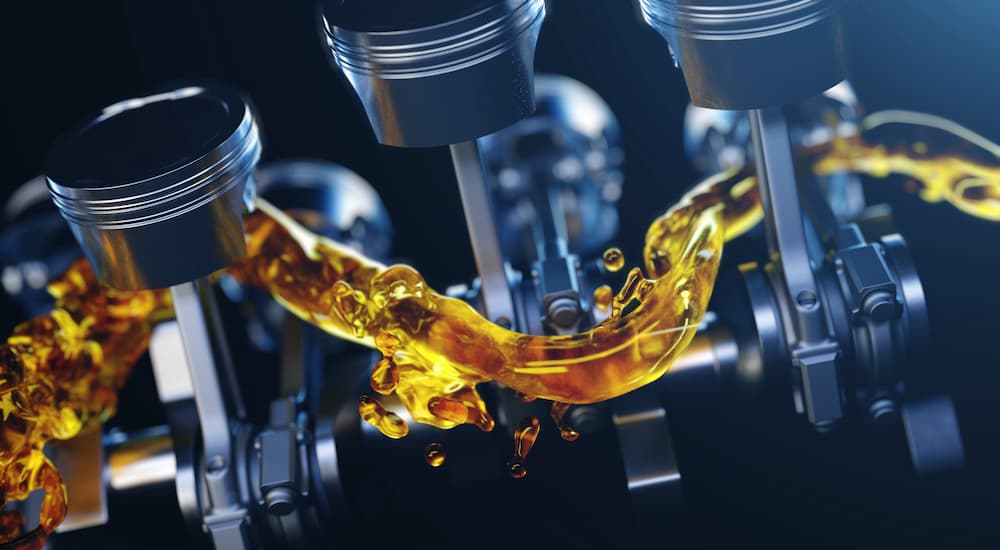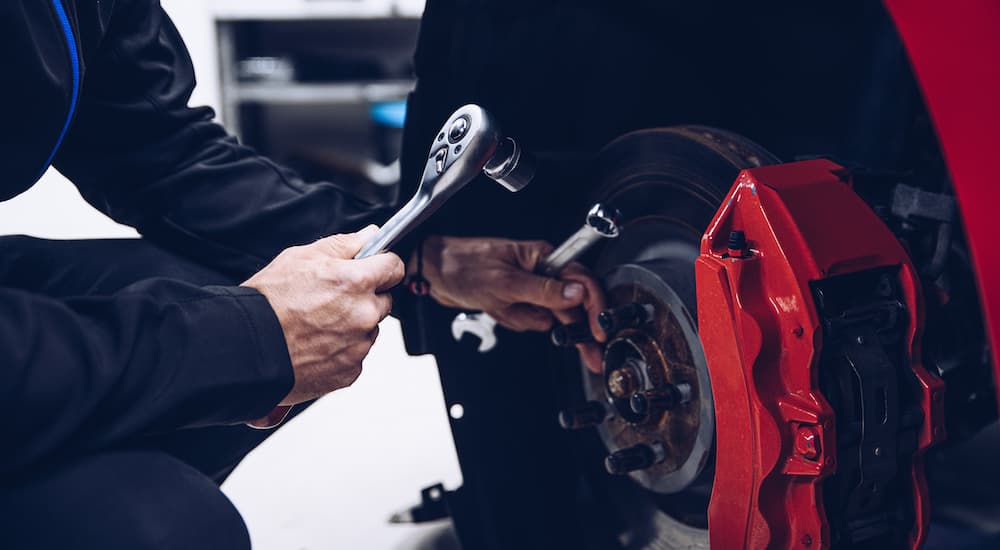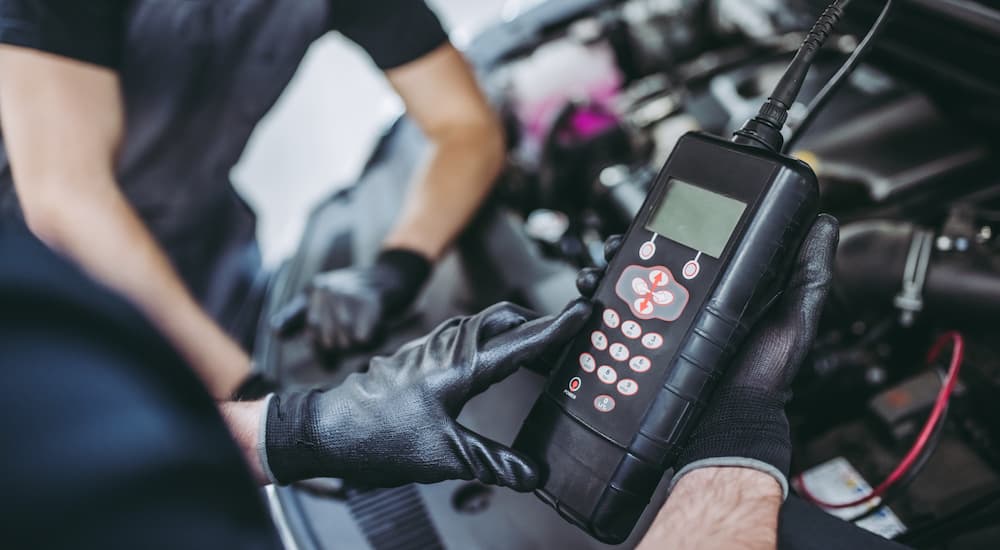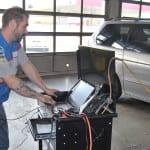The auto repair industry has changed greatly over the decades. Everything from how frequently you need auto service to what sorts of services are required to keep your vehicle running has changed. Taking care of a car today looks very different than it did just a few decades ago, and the further back you go, the more changes there have been. There have been so many advancements in how vehicles are manufactured, which inevitably has resulted in changes in how we take care of them.
#1 – More Dashboard Warnings
At one point, there was just the simple check engine light on your dashboard. It could indicate a variety of issues or maintenance needs. Today, with so many more advanced sensors and onboard computers, your vehicle is able to communicate with you in a more detailed manner about what needs to be done to your car. As a result, there can be dozens of maintenance messages in your car. These can include the original check engine light, a low battery warning, a check battery warning, a malfunction indicator, a low tire pressure warning, and many other indicators. In the past, you would take your vehicle in and tell the technician your check engine light is on, and he would go through a comprehensive series of tests to find the problem. The more detailed messages available today may let you skip the technician entirely. This means less time at the shop for you, and hopefully less money spent tracking down problems.
#2 – From Manual Diagnostics to Computer Diagnostics
Computer diagnostics have also completely changed the way technicians assess your vehicle. Before, bringing your vehicle in when it was making an odd noise meant the old-fashioned picture of a mechanic looking under the hood or propping up your vehicle to look beneath it to find the problem. Today, thanks to intelligent onboard computers and the intricate systems of sensors, technicians can use computers to rapidly diagnose an issue with very little hands-on inspection. That leads to a more accurate diagnosis and more effective repairs.
#3 – Electronics Rule (Almost) Everything
There has, in general, been an increase in the use of electronic parts in cars. There aren’t only computers diagnosing your vehicle––there are also computers running things like your airbags and brakes. When you bring your vehicle in for service, you don’t only need to have things like your battery and engine checked; you also need to make sure the technician inspects your electronic components. This overall increase in electronics use in vehicles has also meant that technicians need to undergo regular training to keep up with the new systems in our evolving vehicles.

#4 – Oil Lasts Longer Than It Used To
If you had asked someone a few decades ago how frequently you should get your oil changed, they would have told you a standard model needs an oil change every 3,000 miles. Luckily, there have been so many improvements in engine oil and lubricants that these important fluids can now last much longer than in the past. In fact, most vehicles today can go 7,500 miles or longer without needing an oil change when using modern synthetic oils.
#5 – More Safety Features Means More Things to Maintain
Most vehicles today are built with an impressive array of safety features. With things like automatic braking, blindspot monitoring, lane keep assist, and even hands-free driving systems, your car is a very intelligent machine. Of course, technicians today also have to know how to check that all of these features are working properly. Given that these features can save your life, it is critical the technicians know how to assess them and, when they aren’t working properly, fix them. This means technicians must ensure that your warning systems are operating properly and that automated systems such as automatic braking or steering are also prepared to take over when necessary.
#6 – The Need for Electric Vehicle Mechanics
The boom in electric vehicles has given birth to a new school of technicians. Hybrid, plug-in hybrid, and fully electric vehicles rely on powertrains that are different from traditional gas-only vehicles. From high-voltage battery packs to powerful electric motors, these models require different tools and expertise than gasoline vehicles. If you drive any form of electrified car, it is important to find a technician who specializes in caring for the electric parts of these green models.
#7 – A Greater Interest in Eco-Friendly Maintenance and Repair
On a parallel track to the emergence of electric vehicles, there has been an increased interest in eco-friendly maintenance in general. Many people seek out mechanic shops that specifically use environmentally friendly processes and products. This has been an integral part of the general atmosphere that now focuses more on how the way we drive and care for vehicles impacts the environment.
#8 – An Emphasis on Prevention Like Never Before
Today, people simply expect their vehicles to run longer than they used to, and most vehicles do run longer than they used to. This is partially because there is an increased focus on preventative maintenance rather than repairs. When you speak to your mechanic, they will probably talk to you about specific maintenance schedules and services you should bring your vehicle in for on a regular basis in order to boost its longevity. Just like people are living longer than they used to, cars are too, and the auto repair industry has adjusted accordingly.
#9 – Mobile Auto Shops That Come to You
Today, you don’t always have to go to the mechanic for maintenance and repairs. The mechanic can now come to you. There has been an increase in mobile mechanics who keep all of the tools and equipment they need in a bus or van and can bring them directly to your home or office. This means your vehicle can be cared for while you carry on with your regular activities. This is just one element of the auto maintenance industry that has become more customer-centric.
#10 – New Materials = New Technician Specialities
As part of an increased focus on fuel economy, many manufacturers have turned to using lighter materials, like aluminum body panels. This has meant that technicians have had to undergo new training to know the best techniques and tools to use on these lighter materials. If you have a vehicle like the Ford F-150 that makes extensive use of aluminum, make sure to find a body shop that is equipped to handle it.
Maintaining a Vehicle Has Changed
Just as there has been a tremendous deal of advancement in how we diagnose and care for issues in the human body, there have been similar advancements in how we diagnose and treat issues in vehicles. That includes an increase in preventative care for cars, just like with people. If you are looking for an auto mechanic today, do your research and find one who is trained in the most current techniques for vehicle repairs and maintenance. That’s the best way to get maximum mileage out of your vehicle and even enjoy better fuel economy and performance. However, if you have a vintage vehicle, make sure you find a mechanic skilled in caring for it. Newer mechanics might only know how to care for modern vehicles and vintage gems require a special touch.





